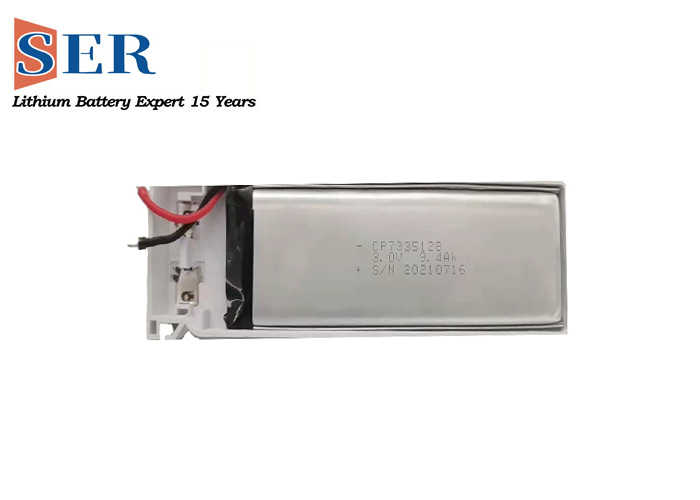The Evolution and Applications of Prismatic LiMnO₂, Primary Prismatic Pouch Cells, 3.0V Pouch Cells, and Ultra-Thin Batteries
The Evolution and Applications of Prismatic LiMnO₂, Primary Prismatic Pouch Cells, 3.0V Pouch Cells, and Ultra-Thin Batteries

The realm of batteries has witnessed a significant evolution over the years, driven by the relentless pursuit of higher energy densities, improved safety, and reduced environmental impact. Among these advancements, prismatic LiMnO₂ cells, primary prismatic pouch cells, 3.0V pouch cells, and ultra-thin batteries have emerged as cutting-edge technologies, reshaping the landscape of portable power sources. This article delves into the intricacies of these battery types, exploring their characteristics, applications, and the challenges they pose for the industry.
Prismatic LiMnO₂ Cells
Prismatic LiMnO₂ cells are a type of lithium-ion battery that utilizes manganese dioxide (MnO₂) as the positive electrode material. Lithium-ion batteries are renowned for their high energy density, low self-discharge rate, and lack of memory effect, making them a popular choice for a wide range of applications. Prismatic cells, as opposed to the traditional cylindrical design, offer increased flexibility in packaging and integration, enabling a more compact and efficient use of space.
The use of MnO₂ in the positive electrode of prismatic LiMnO₂ cells provides several advantages. Manganese is an abundant and cost-effective material, making these batteries economically viable. Furthermore, MnO₂ exhibits high stability and good cycling performance, ensuring a long service life. However, MnO₂ also poses some challenges, such as limited energy density compared to other lithium-ion battery chemistries.
Prismatic LiMnO₂ cells find applications in various portable electronic devices, electric vehicles, and energy storage systems. Their compact design and relatively high energy density make them an excellent choice for applications where space is limited and energy requirements are moderate.
Primary Prismatic Pouch Cells
Primary prismatic pouch cells represent a departure from rechargeable lithium-ion batteries, offering a primary (non-rechargeable) solution with a flexible and lightweight design. These cells utilize a prismatic shape enclosed in a flexible pouch, typically made of a laminate material. This design allows for greater flexibility in packaging and integration, enabling a more compact and conformable battery system.
The use of a primary chemistry in prismatic pouch cells provides several benefits. Primary batteries are typically more stable and reliable, with a lower risk of thermal runaway or leakage. Furthermore, they require no maintenance or charging infrastructure, simplifying their use and integration into various devices.
Primary prismatic pouch cells find applications in a diverse range of products, including wearable devices, medical implants, and remote sensors. Their lightweight and flexible design enable seamless integration into these devices, providing reliable power without compromising on comfort or performance.
3.0V Pouch Cells
3.0V pouch cells represent a class of lithium-ion batteries that operate at a nominal voltage of 3.0 volts. These cells utilize a variety of chemistries, including lithium cobalt oxide (LiCoO₂), lithium iron phosphate (LiFePO₄), and others, to achieve the desired voltage output. Pouch cells are characterized by their flexible and lightweight design, enclosed in a pouch-like laminate envelope.
The 3.0V voltage rating of these cells makes them suitable for a wide range of applications. They provide sufficient power for many portable electronic devices, such as smartphones, tablets, and laptops, while maintaining a relatively high energy density. Furthermore, their flexible design enables easy integration into curved or irregularly shaped devices, providing greater flexibility in product design.
The choice of chemistry within 3.0V pouch cells depends on the specific requirements of the application. LiCoO₂-based cells offer high energy density and good performance but are more expensive. LiFePO₄-based cells, on the other hand, are more cost-effective but have a lower energy density. The selection of the appropriate chemistry is a critical decision that balances cost, performance, and safety considerations.
Ultra-thin batteries represent a class of batteries that are designed to achieve extreme thinness, often less than 1 millimeter in thickness. These batteries utilize advanced materials and manufacturing techniques to achieve their ultra-slim profile, enabling seamless integration into thin and lightweight devices.
Ultra-thin batteries find applications in various products where space is extremely limited, such as smart cards, wearable devices, and flexible electronics. Their thin design enables them to be incorporated into these devices without adding significant bulk or affecting user comfort.
The manufacture of ultra-thin batteries poses several challenges. The use of thin electrodes and separators requires precise manufacturing techniques to ensure uniform thickness and performance. Furthermore, the integration of thin batteries





